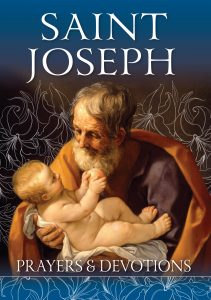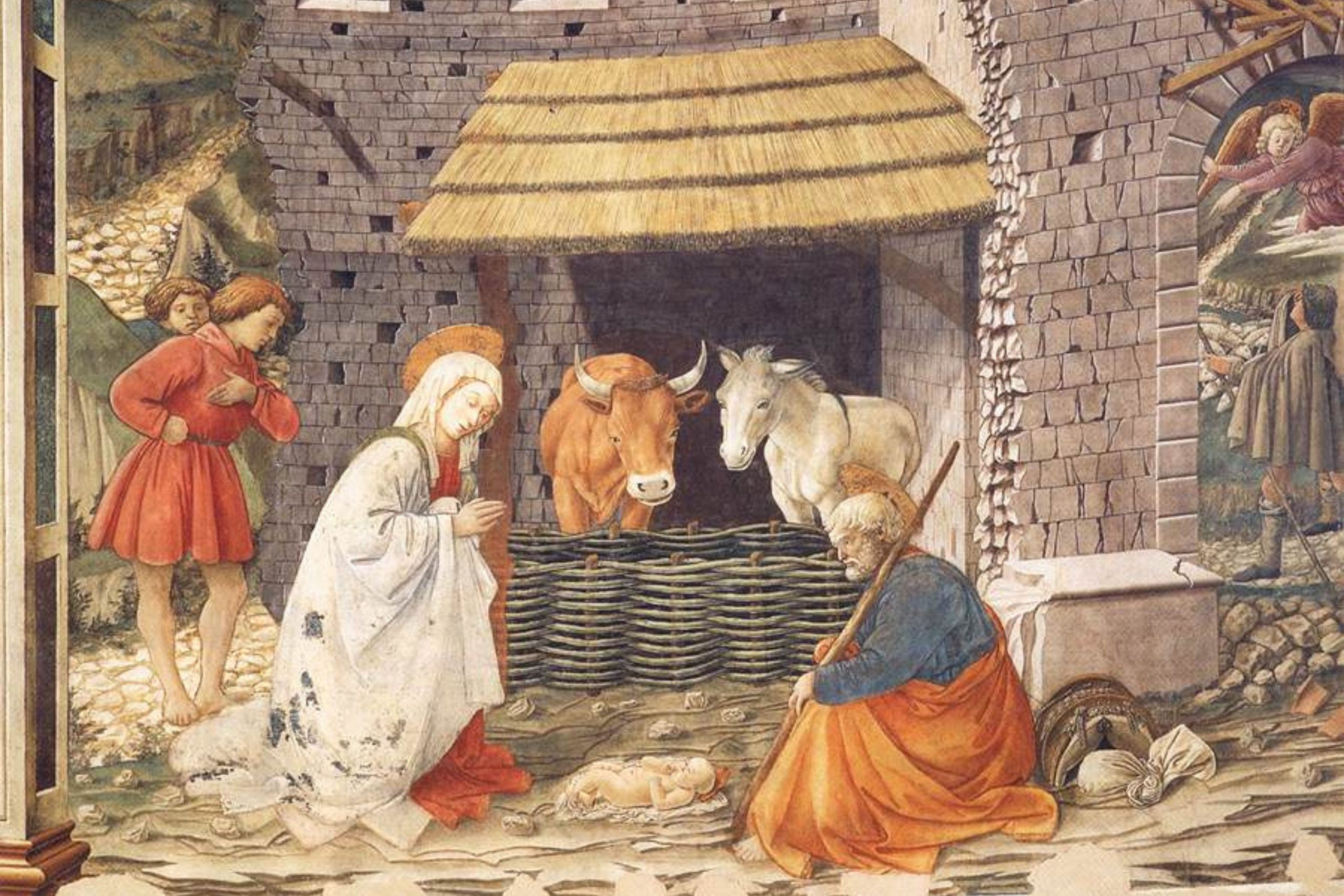What we know of St Joseph in historical terms is found in the opening chapters of the Gospels of St Matthew and St Luke. Other information has come down to us via the apocryphal writings – that is, writings that were ultimately not accepted by the Church – which were in circulation during the early centuries. But while some of what they contain about him may be true, it is only in the Gospels that we have absolute certainty, since the Church has accepted only them as canonical.
And what is in the Gospels about him is so little! We would love to know more. But we do not even have any record of what he said. St Joseph played a very important role as the foster-father of Jesus and the spouse of Our Lady, but he did so quietly, remaining in the background.
Joseph was of the House of David, and the tribe of Judah, and from the Gospels we learn that he was born in Bethlehem, the City of David near Jerusalem. His genealogy is given in both the Gospels of Matthew and Luke. At the time when he entered into his great role as head and protector of the Holy Family, he was living in Nazareth in Galilee, far to the north of Bethlehem. The reason for this move is uncertain, but perhaps it was due to the necessity of finding work there as a carpenter. It was probably in Nazareth that Joseph became betrothed to Mary, and then their marriage ceremony would have taken place after the Annunciation, about a year later. In the Jewish culture of the time, betrothal was considered to be the equivalent of marriage in everything but name.
It is from the apocryphal writings that the idea of Joseph being an old man originated, and these also give details of the story that Joseph was chosen to be Our Lady’s spouse in a miraculous way. But given the difficulties he had to endure, it is unlikely that he was very old, and it is more probable that he was in his thirties or perhaps his forties when Jesus was born.
The marriage of St Joseph and Our Lady
According to St Augustine (354-430) and St Thomas Aquinas (1225-1274), who have been regarded as amongst the foremost Catholic thinkers, although the marriage of Our Lady and St Joseph was a true marriage, it was a chaste and virginal one.
The distress of St Joseph on finding out that Our Lady was with child, following the Annunciation of the birth of the Christ Child to her by the Angel Gabriel, was thus considerable, and his faith in her was certainly put to the test. From this we can already gain an idea of Joseph’s holiness and greatness, in that his reaction was very different from what might have been expected. Instead of reacting angrily, to spare Our Lady any embarrassment he resolved to send her away quietly. For this reason St Matthew described him as a “just man”. Then an angel of the Lord appeared to him in a dream and said: “Joseph, son of David, do not fear to take Mary your wife, for that which is conceived in her is of the Holy Spirit; she will bear a son, and you shall call his name Jesus, for he will save his people from their sins” (Mt 1:20-21).
The birth of Jesus at Bethlehem
St Joseph did not delay, but when he awoke he firmly resolved to make Mary his wife, and then, some time later, when the baby was due, it became necessary for them to go to Bethlehem in order to comply with the order from the Roman Emperor, Caesar Augustus, for a census. This must have been a difficult journey for both of them, but their distress was compounded when, on arriving in Bethlehem, they could find nowhere to stay, even though the birth was imminent. Here, too, was a strong test of Joseph’s faith. The Holy couple eventually found some lodging, traditionally located in caves outside Bethlehem, and it was here that Our Lady gave birth to Jesus without the usual pains of childbirth. What a mysterious and wonderful event that must have been for Joseph to be part of such a marvel.
The Gospel of Luke then outlines how local shepherds, alerted to the miraculous birth by hosts of angels, came to reverence the child, and also how Mary pondered on all these things in her heart, an attitude of awe and contemplation surely shared by her silent spouse. St Joseph was also with Our Lady when she went to the Temple for the Presentation of the baby Jesus, but he remained in the background as the aged Simeon spoke to Mary and prophesied how her child was destined to be a sign of contradiction for many in Israel, and spoke about how a sword of sorrow – the crucifixion – would pierce her soul (Lk 2: 34-35).
St Joseph and the Holy Family
Joseph had an important role to play following the visit of the Wise Men, and the hurried departure of the Holy Family to avoid the wrath of King Herod. Once again, an angel appeared to him in a dream and instructed him to flee to Egypt with Mary and the child, because Herod wanted to kill him. Joseph arose that same night in obedience to this command and the Holy Family departed for Egypt, where they stayed until Herod was dead.
Joseph was told about this event through another dream in which God’s Angel told him to go back to his own country. But on their return, following another dream they went to live in Nazareth in Galilee (Mt 2).
We hear nothing about the everyday life of the Holy Family in Nazareth, and must assume that St Joseph’s life henceforth was entirely focused on providing for Mary and Jesus, living a simple life with them, and supporting them by means of his work as a carpenter while remaining faithful to the religious practices of his ancestors.
The last time Joseph is mentioned in the Bible, though not by name, occurs during the narration of the finding of the Child Jesus in the Temple when he was 12, after he had been lost for three days. But once again the focus of this account is on Mary, although she does refer to St Joseph touchingly as Jesus’ father (Lk 2:41-52).
We are not told anything about Joseph’s death, but presumably this happened before the beginning of the public life of Christ, since further on in the Gospels we hear of Jesus’ mother and brothers (Mt 12:46), but never of Joseph, although Jesus was known as the son of Joseph (Jn 1:45). And it is certain that if Joseph had still been alive at the time of the crucifixion, then Jesus would have entrusted Mary to him while on the cross, rather than to St John. We do not know where he was buried, and no cultus has been attached to any bodily relics of his. Given the fact that St Joseph surely died in the arms of Jesus and Mary, and surrounded by their love, he has come to be recognised as the patron of a happy death.
 This blog is extracted from St Joseph: Prayers and Devotions. Explaining the effects of devotion to St Joseph over the centuries, this booklet is a practical and simple way for people to foster a devotional spirit and can be used individually or in parish groups.
This blog is extracted from St Joseph: Prayers and Devotions. Explaining the effects of devotion to St Joseph over the centuries, this booklet is a practical and simple way for people to foster a devotional spirit and can be used individually or in parish groups.
Get your copy of St Joseph: Prayers & Devotions now and support the mission of CTS.
